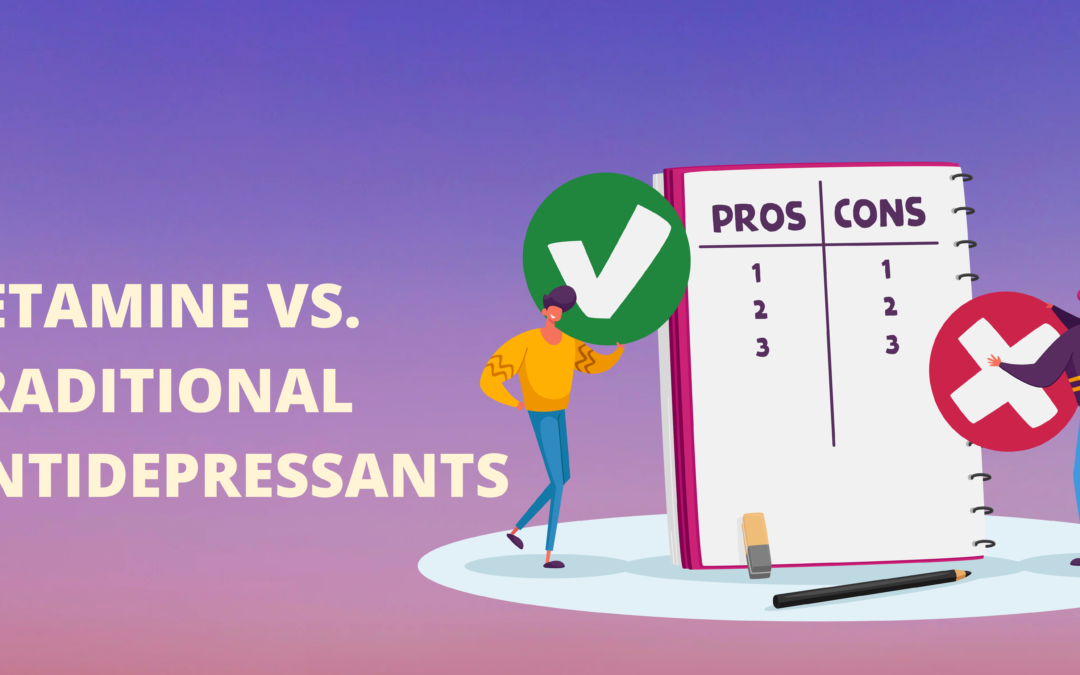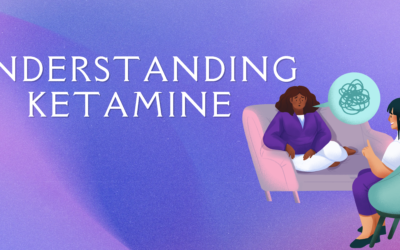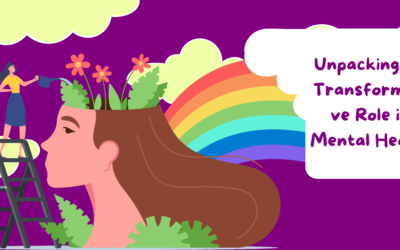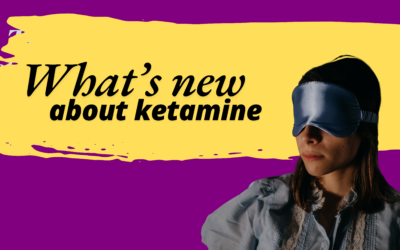Understanding Depression
Traditional Antidepressants: An Overview
The Intersection of Ketamine and Traditional Therapies
Mechanisms of Action
Traditional antidepressants largely fall into several categories, including:
1.Selective Serotonin Reuptake Inhibitors (SSRIs)**: These drugs, such as fluoxetine (Prozac) and sertraline (Zoloft), work by increasing serotonin levels in the brain, which is thought to improve mood and alleviate anxiety. They are usually considered the first-line treatment for depression.
2. Serotonin-Norepinephrine Reuptake Inhibitors (SNRIs)**: Medications like venlafaxine (Effexor) and duloxetine (Cymbalta) target both serotonin and norepinephrine, providing additional benefits for some patients with depression and anxiety disorders.
3. Tricyclic Antidepressants (TCAs)**: While older and less commonly prescribed due to their side effect profile, TCAs like amitriptyline affect multiple neurotransmitter systems and can be effective for some patients.
4. Monoamine Oxidase Inhibitors (MAOIs)**: These are less commonly used due to dietary restrictions and potential interactions but can be effective for treatment-resistant depression.
Efficacy and Timeframe
Traditional antidepressants typically take several weeks to start showing effects—often between 4 to 6 weeks. This delayed onset can be problematic for individuals experiencing severe depressive symptoms or suicidal ideation, creating an urgent need for alternatives.
Side Effects
While traditional antidepressants can be effective, they also come with a range of potential side effects, including:
– Weight gain
– Sexual dysfunction
– Insomnia or excessive sleepiness
– Dry mouth
– Nausea
– Increased anxiety or agitation
These side effects can lead to non-adherence to treatment or discontinuation, further complicating the patient’s recovery journey.
Ketamine: A New Approach
Ketamine vs. Traditional Antidepressants: Pros and Cons
In the evolving landscape of mental health treatment, particularly for depression, ketamine has emerged as a controversial yet promising alternative to traditional antidepressants. Understanding the pros and cons of each can provide valuable insights for patients and healthcare providers grappling with the complexities of treating depression. In this blog post, we will explore both options in detail, discussing their mechanisms, efficacy, side effects, and practical considerations.
Understanding Depression
Depression is a multifaceted mental health disorder characterized by persistent feelings of sadness, hopelessness, and a lack of interest in previously enjoyed activities. It affects millions of people worldwide and can severely impact daily functioning, relationships, and overall quality of life. Traditional antidepressants have been the cornerstone of treatment for many years, but their limitations have led to increasing interest in alternative therapies like ketamine.
Traditional Antidepressants: An Overview
Mechanisms of Action
Traditional antidepressants largely fall into several categories, including:
1. Selective Serotonin Reuptake Inhibitors (SSRIs)**: These drugs, such as fluoxetine (Prozac) and sertraline (Zoloft), work by increasing serotonin levels in the brain, which is thought to improve mood and alleviate anxiety. They are usually considered the first-line treatment for depression.
2. Serotonin-Norepinephrine Reuptake Inhibitors (SNRIs)**: Medications like venlafaxine (Effexor) and duloxetine (Cymbalta) target both serotonin and norepinephrine, providing additional benefits for some patients with depression and anxiety disorders.
3. Tricyclic Antidepressants (TCAs)**: While older and less commonly prescribed due to their side effect profile, TCAs like amitriptyline affect multiple neurotransmitter systems and can be effective for some patients.
4. Monoamine Oxidase Inhibitors (MAOIs)**: These are less commonly used due to dietary restrictions and potential interactions but can be effective for treatment-resistant depression.
Efficacy and Timeframe
Traditional antidepressants typically take several weeks to start showing effects—often between 4 to 6 weeks. This delayed onset can be problematic for individuals experiencing severe depressive symptoms or suicidal ideation, creating an urgent need for alternatives.
Side Effects
While traditional antidepressants can be effective, they also come with a range of potential side effects, including:
– Weight gain
– Sexual dysfunction
– Insomnia or excessive sleepiness
– Dry mouth
– Nausea
– Increased anxiety or agitation
These side effects can lead to non-adherence to treatment or discontinuation, further complicating the patient’s recovery journey.
Ketamine: A New Approach
Mechanism of Action
Ketamine, originally developed as an anesthetic, has gained attention for its rapid antidepressant effects. Unlike traditional antidepressants, which primarily target serotonin and norepinephrine, ketamine works by blocking N-Methyl-D-Aspartate (NMDA) receptors in the brain, leading to increased glutamate release. This mechanism promotes synaptic plasticity, potentially “resetting” the brain’s neural pathways associated with mood regulation.
Fast-Acting Relief
One of the most significant advantages of ketamine is its rapid onset. Studies have shown that ketamine can produce noticeable improvements in depressive symptoms within hours of administration. This rapid relief is particularly beneficial for patients at risk of suicide or those experiencing severe depressive episodes.
Administration Methods
Ketamine can be administered in several forms:
– Intravenous (IV) Infusion**: The most common method in clinical settings, providing a controlled dose.
– Intranasal Spray**: Esketamine (Spravato) is a nasal spray form of ketamine approved for treatment-resistant depression.
– Oral Tablets**: Less commonly used, and often at higher dosages, this method requires careful monitoring.
Side Effects of Ketamine
Despite its advantages, ketamine is not without drawbacks. Common side effects include:
– Dissociation or altered perceptions during treatment
– Dizziness or lightheadedness
– Nausea
– Increased blood pressure
– Potential for abuse or dependency, particularly with repeated recreational use
Comparing Efficacy
Treatment-Resistant Depression
For patients with treatment-resistant depression—those who have tried multiple traditional antidepressants without success—ketamine has emerged as a viable alternative. Research indicates that a significant percentage of these patients may experience substantial improvements following ketamine treatment, offering hope where traditional methods have failed.
Long-Term Effects
While ketamine can provide fast relief, its long-term efficacy remains a topic of research. Some studies suggest that the effects may last longer than initially expected, especially when combined with psychotherapy or followed up with maintenance treatments. Conversely, traditional antidepressants are generally prescribed for extended periods, as discontinuing them often leads to a relapse of symptoms.
Ketamine, originally developed as an anesthetic, has gained attention for its rapid antidepressant effects. Unlike traditional antidepressants, which primarily target serotonin and norepinephrine, ketamine works by blocking N-Methyl-D-Aspartate (NMDA) receptors in the brain, leading to increased glutamate release. This mechanism promotes synaptic plasticity, potentially “resetting” the brain’s neural pathways associated with mood regulation.
Fast-Acting Relief
One of the most significant advantages of ketamine is its rapid onset. Studies have shown that ketamine can produce noticeable improvements in depressive symptoms within hours of administration. This rapid relief is particularly beneficial for patients at risk of suicide or those experiencing severe depressive episodes.
Administration Methods
Ketamine can be administered in several forms:
– Intravenous (IV) Infusion**: The most common method in clinical settings, providing a controlled dose.
– Intranasal Spray**: Esketamine (Spravato) is a nasal spray form of ketamine approved for treatment-resistant depression.
– Oral Tablets**: Less commonly used, and often at higher dosages, this method requires careful monitoring.
Side Effects of Ketamine
Despite its advantages, ketamine is not without drawbacks. Common side effects include:
– Dissociation or altered perceptions during treatment
– Dizziness or lightheadedness
– Nausea
– Increased blood pressure
– Potential for abuse or dependency, particularly with repeated recreational use
Comparing Efficacy
Treatment-Resistant Depression
For patients with treatment-resistant depression—those who have tried multiple traditional antidepressants without success—ketamine has emerged as a viable alternative. Research indicates that a significant percentage of these patients may experience substantial improvements following ketamine treatment, offering hope where traditional methods have failed.
Long-Term Effects
While ketamine can provide fast relief, its long-term efficacy remains a topic of research. Some studies suggest that the effects may last longer than initially expected, especially when combined with psychotherapy or followed up with maintenance treatments. Conversely, traditional antidepressants are generally prescribed for extended periods, as discontinuing them often leads to a relapse of symptoms.
Conclusion
Both ketamine and traditional antidepressants offer unique benefits and drawbacks in the treatment of depression. Ketamine provides rapid relief and is an option for those with treatment-resistant depression, but it may come with side effects and costs that limit accessibility. Traditional antidepressants, while slower acting and potentially less effective for some, offer a long-term treatment strategy that has helped many navigate their mental health challenges. Consulting with a healthcare professional is essential to determine the best approach tailored to individual needs and circumstances.
Always consult with a qualified healthcare professional before starting any new treatment and ensure that you receive care from experienced providers who understand the complexities of ketamine therapy. With ongoing research and clinical use, ketamine may well change the landscape of chronic pain management in the years to come.
Understanding Ketamine
Understanding Ketamine: A Revolutionary Treatment for Depression and Beyond In recent years, ketamine has gained significant attention in the medical community, particularly for its promising applications in treating depression, anxiety, and other mental health...
Unpacking Its Transformative Role in Mental Health
Ketamine, originally developed as an anesthetic in the 1960s, has garnered significant attention in recent years for its potential benefits in treating various mental health conditions. This powerful drug, once primarily associated with recreational use and...
Whats new about Ketamine
Once known primarily as an anesthetic and a party drug, ketamine is now gaining significant attention in the medical community for its potential therapeutic applications, particularly in treating mental health conditions. Recent research has focused on its effects on...




